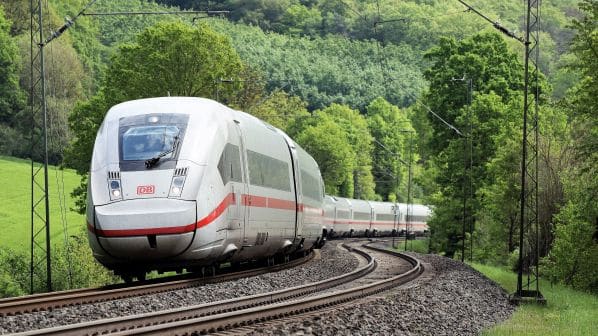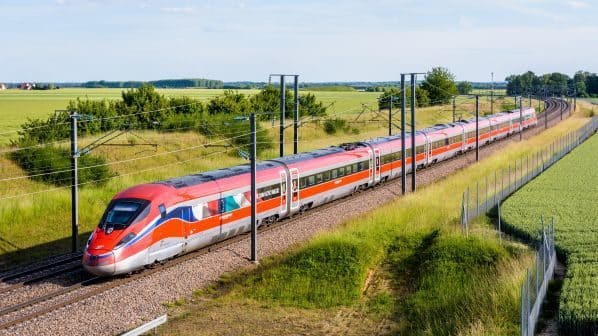GERMAN Rail (DB) has presented a proposal for an extended 32,000km European “Metropolitan Network” for high-speed rail, which it believes could act as a blueprint for tripling high-speed traffic in Europe by 2050, in line with European Union (EU) objectives.
DB says the starting point for the study was the EU Green Deal and the issue of what the rail network must look like to achieve the goal of doubling high-speed rail traffic by 2030 and tripling it by 2050, as outlined in the Sustainable and Smart Mobility Strategy.
The study says that rail’s market share in Europe was just 7% in 2019 and has only grown slightly since 2000. In a discussion paper published in 2022, DB estimated that only 75% of the required traffic growth by 2030 could be achieved using the existing network or planned lines.
“Several countries, especially in the eastern regions of Europe, are inadequately connected or not connected at all by high-speed lines, which leaves much of the potential for traffic growth untapped,” the report says. “From a demand-driven perspective, it appears that a broader network is required to effectively connect all the metropolitan regions in the European Union.”

DB commissioned Planung Transport Verkehr (PTV) to study the feasibility of the EU’s targets for 2030 and 2050. Teaming up with DB and nine European operators (see below), PTV developed a travel demand model, which is able to predict natural growth of transport demand caused by changes in population and incomes and the impact of shorter journey times provided by a more extensive high-speed rail network.
The model found that the existing network and expected infrastructure developments will deliver only a 60% increase in traffic compared with 2015 levels, or 175 billion passenger-km per year, which is short of the EU target of 220 billion passenger-km.
The result is a proposal to develop a network that connects all 230 of Europe’s metropolitan regions with more than 250,000 inhabitants, which account for 60% of Europe’s population, with at least an hourly high-speed rail service.
Critically, the proposal says that construction is required of 21,000km of high-speed infrastructure for operation at up to 300km/h. Germany alone would expand its high-speed network to around 6000km from 1571km today, while Poland would increase from 224km at present to 2760km (see graph.)
The study states that a third of the new lines required are already in the 2022 negotiating mandate for a revised Trans-European Transport Network (TEN-T) network. However, it says the current TEN-T plans do no go far enough, and that to complete a European-wide network a significant increase in new line construction should be discussed and added to the TEN-T programme.
Indeed, it says that simulations have shown that implementation of the Metropolitan Network would deliver a three-fold increase in passenger-km by 2050, in line with EU objectives, rising from a 5% share of the market in 2015 to more than 14% by 2050.

DB says that considerable investment in infrastructure needs to be undertaken in nearly every EU member state, which will probably exceed the scope of current funding mechanisms.
“To unlock the needed budgets, new tailor-made financing procedures should be implemented Europe-wide,” the proposal states. DB says that with its study partners, it plans to lobby politicians on this topic in the autumn.
“It is possible to triple high-speed traffic in Europe,” says Mr Michael Peterson, DB board member for long-distance passenger transport. “If the infrastructure is there, millions of people on the continent will benefit from attractive connections and shorter journey times. The railway countries in Central and Western Europe and even more so in Southern and Eastern Europe benefit from this in particular. According to our calculations and simulations, there are attractive journey times on completely new routes and via new rail transport hubs.”
To see the complete study, click here.
DB’s contributing partners in the study
Czech Railways (ČD)
Netherlands Railways (NS)
Austrian Federal Railways (ÖBB)
PKP
Renfe
Swiss Federal Railways (SBB)
Belgian National Railways (SNCB)
French National Railways (SNCF)
Trenitalia
For detailed data on high-speed rail projects in Europe and around the world, subscribe to IRJ Pro.


